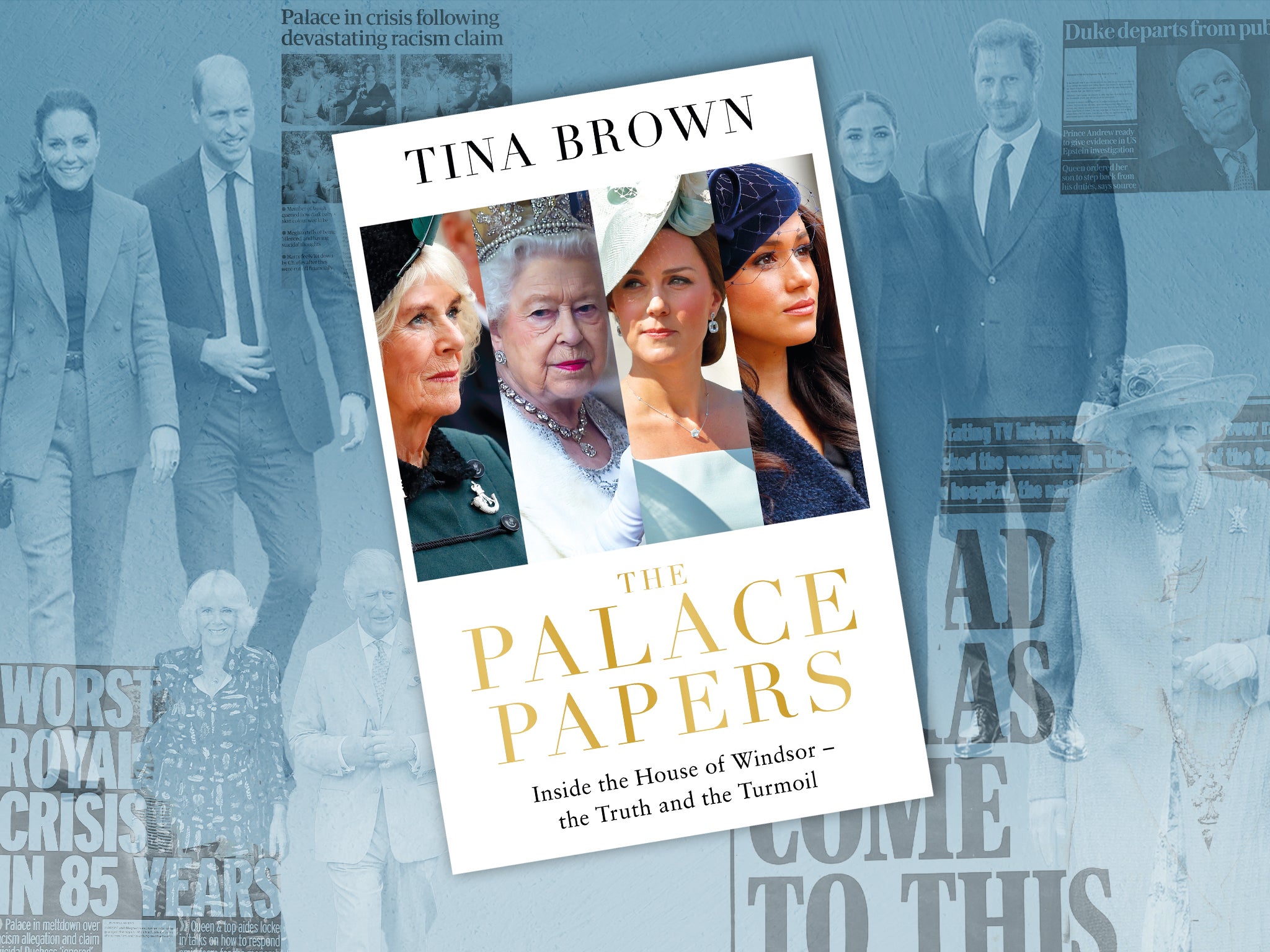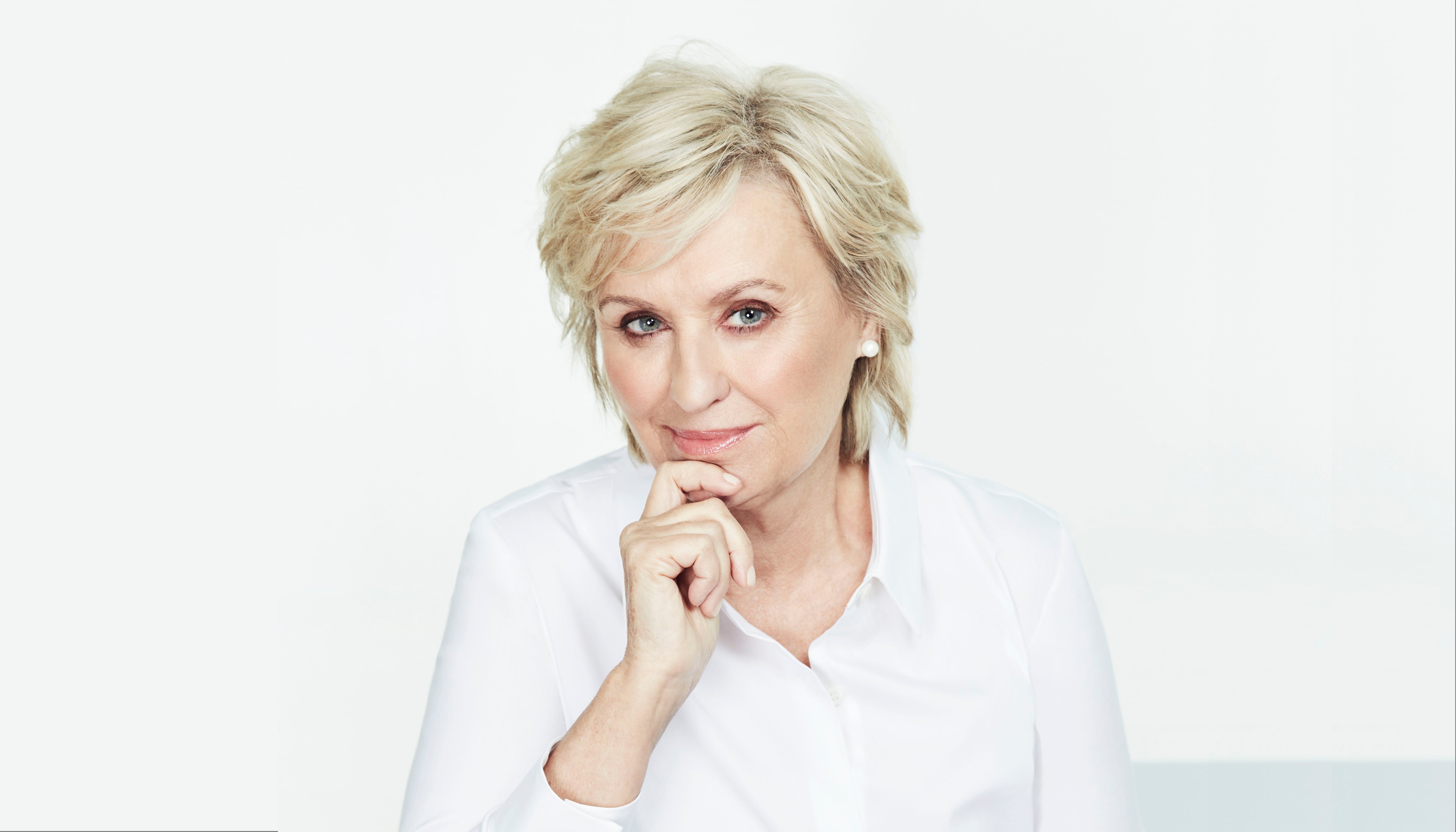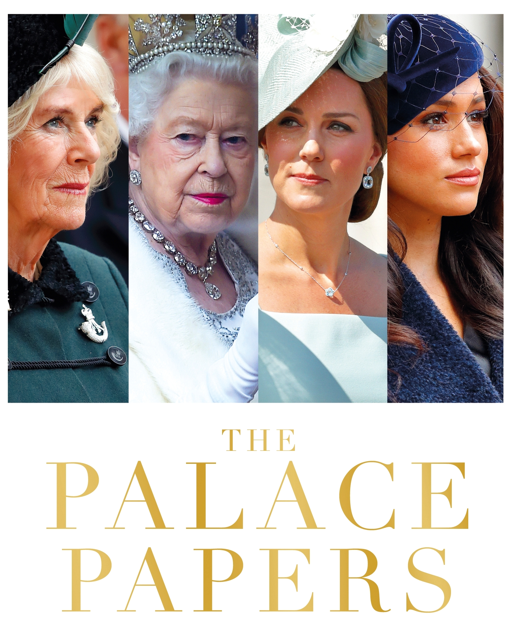The Palace Papers Review: Tina Brown’s latest book is a motherlode of delectable royal gossip
The journalistic titan gives an amusing, and sometimes horrifying, glimpse of what the post-Elizabethan world might bring, writes Sean O’Grady


Your support helps us to tell the story
From reproductive rights to climate change to Big Tech, The Independent is on the ground when the story is developing. Whether it's investigating the financials of Elon Musk's pro-Trump PAC or producing our latest documentary, 'The A Word', which shines a light on the American women fighting for reproductive rights, we know how important it is to parse out the facts from the messaging.
At such a critical moment in US history, we need reporters on the ground. Your donation allows us to keep sending journalists to speak to both sides of the story.
The Independent is trusted by Americans across the entire political spectrum. And unlike many other quality news outlets, we choose not to lock Americans out of our reporting and analysis with paywalls. We believe quality journalism should be available to everyone, paid for by those who can afford it.
Your support makes all the difference.The global fascination with the royal family is in increasingly inverse proportion to their importance on the world stage. Thanks mostly to unwise decisions made by members of the ‘Firm’ and hangers-on to “cooperate” with more-or-less reliable memoirs, along with endless tabloid coverage, there is more source material than ever about them.
Yet few royal biographies are remotely readable. Even fewer have much of interest to say about the institution of monarchy itself – endlessly seeking to answer the pesky question: “What is it for?” Fewer still benefit from the eye for detail that the best writers have, something that can brightly illuminate the fustiest of narratives.
Tina Brown’s latest royal tome, The Palace Papers: Inside the House of Windsor, the Truth and the Turmoil is one of these few. The journalist – former Tatler, Vanity Fair and New Yorker editor – authored the bestselling The Diana Chronicles and has been busy delivering the biggest motherlode of royal gossip since the royal family tried to get Kitty Kelley’s The Royals banned back in 1997.
As our loved but increasingly frail Queen turns 96, and her jubilee year proceeds gingerly forward, Brown has produced a work both scholarly and scandalous that makes us think about what the post-Elizabethan world may bring, alternately amusing and horrifying us along the way. Since her tiring bout of Covid, we see less and less of Her Majesty. We know that, before too long, a palace official will put the call in to Downing Street and tell the prime minister that “London Bridge is Down”. The national grief will be remarkable, not least because we fear what’s coming next – the briefer and anti-climactic reign of Charles III. He has a tough act to follow.
The Prince of Wales comes in for especial scrutiny, because he’s caused so many [royal triumphs and tragedies]
Although occasionally delving back into the more distant past of this 1,000-year reich, most of The Palace Papers concentrates on the last three decades or so of royal triumphs and tragedies. It means the Prince of Wales comes in for especial scrutiny, because he’s at the centre of so many of them (I wouldn’t be surprised if it were he who had accidentally set fire to Windsor Castle in the “annus horribilis” of 1992 – of course, there’s no suggestion he actually did).
It isn’t always obvious which details in Brown’s work are already in the public domain, or what is closer to well-founded rumour than documented fact, but such is her skill at weaving together the vast amount of secondary material and details gleaned from speaking to more than 120 sources – that, for the purposes of entertainment, it scarcely matters. The portraits of people and events Brown paints are always vivid and richly-embroidered.
The book’s sketches of the Prince of Wales are the most elegant and eye-catching of all. In his days as the world’s most eligible bachelor, “his Dumbo ears were offset by his excellent tailoring and debonair polo prowess,” Brown notes. They were apparently enough to attract the attention of Camilla Shand, later Parker-Bowles, now Duchess of Cornwall and now soon to be Queen Camilla. It seems clear that there’s only one woman Prince Charles ever loved, and has done from the age of 23. This spirited, earthy, society girl urged Charles to overcome his sexual shyness: “Pretend I’m a rocking horse” she apparently told him. So he always did know “whatever ‘love’ is”.

Brown describes Charles as like a “cartoon of a gouty squire… growing into the role of grandfather of the nation.” Although pushing 75, I suspect Charles doesn’t see himself quite that way. He knows, because he’s been watching mummy do it for 70 years, that he’ll have to keep his ideas to himself in future. He is no more than a passive cypher for Boris Johnson to lie to, sad to say.
In a competitive field, Charles is the strangest of the Windsors. Brown reminds us that those who know him best don’t always rate him. His father apparently “ruminated that Charles ‘was not King material’.” His mother, who has had to rely on him more in her old age and after the retirement and death of Prince Philip, used to find him “maddening”, Brown writes. An acquaintance of Charles tells the author, damningly, that he’s “the wrong sort of person for [The Queen] – too needy, too vulnerable, too complicated, too self-centred, the sort of person she cannot bear”.
It’s not clear whether, after a decade of austerity and the current cost of living crisis, the heir to the throne still makes his princely progress around the kingdom like some Tudor throwback, but the accounts of it hardly suggest a man in touch with his future subjects:
“When he travels to stay at friends’ country houses a truck arrives the day before, bringing his bed, furniture and even pictures which his pampering aide Michael Fawcett ensured would be hung in his allotted bedroom in place of the possessions of his host. Unlike the Queen who always ate what she was served, the prince stipulated his menu preferences up front and sometimes arrived at dinner with a pre-mixed martini ready to be handed to the butler and served in his own glass.”
Fans of royal minutiae, and assiduous chatelaines everywhere, will be pleased to learn that our future king apparently prefers Kleenex Velvet when he’s on the throne, so to speak, and no host need worry about scrubbing the bog seat spotless because he brings his own, such are the sensitivities of the regal buttocks. More wholesomely, his favourite childhood teddy bear also accompanies him, still patched up from time to time by his favourite former nanny, Mabel. He makes Jacob Rees-Mogg look like Wayne Rooney.
There are very few disappointments in Brown’s brilliant book
You can tell Brown has spent a lifetime at the top of the glossy mag trade. Her descriptions of royal dress and regalia are some of the most enjoyable in the book. Of Camilla’s marriage to Charles in 2005 she writes:
“The fashion press agreed that Robinson Valentine pulled off a sprinkle win with its outfits: a delicate cream chiffon dress under an oyster silk basket-weave coat paired with a wide-brimmed, white-feathered Philip Treacy hat for the civil ceremony; a porcelain-blue chiffon dress and matching coat, embroidered with five varieties of gold thread that glowed in the light of St George’s Chapel, for the blessing. Hat maestro Treacy excelled himself a second time with a headdress of gold-leafed feathers, reminiscent of waving cornfields at harvest and a chic rural accent for a bride who loved the country.”

But not everything is as bright and life-enhancing as Camilla’s outfit. On Prince Andrew, for example, Brown alleges that, after his split from Fergie in 1993, he sequestered himself on the estate of the Annenbergs (celebrated wealthy American socialites friendly with HMQ) in California “for two days apparently watching porn”. Andrew’s nickname at Gordonstoun was ‘The Sniggerer’ because of his alleged penchant for mucky jokes. Brown doesn’t have much new on him and Jeffrey Epstein, but Randy Andy doesn’t come out of it well.
Brown suggests Andrew suffers from Dunning-Kruger delusion: “The cognitive bias in which people come to believe that they are smarter and more capable than they really are… Years of enjoying unearned obeisance to his royal position allowed Andrew to bang on with a combination of overweening self-confidence and unchallenged ignorance.” At a lunch with Johnson when he was Mayor of London, Andrew “made a muddled pitch for such city improvements as fewer traffic lights so that there would be fewer red lights, and a larger Queen Elizabeth II Conference Centre. (‘If it’s too small it’s your mum’s fault’, Boris allegedly said.) After Andrew was escorted from the lunch, Boris turned and apparently commented, “‘I’m the last person to be a republican but f**k, if I ever have to spend another lunch like that, I soon will be’.”
Perhaps the most powerful survival element of the monarchy has turned out to be marital love
There are very few disappointments in Brown’s brilliant book. She hasn’t identified who commented on the colour of unborn baby Archie’s skin (the revelation that left Oprah Winfrey and millions of viewers open-mouthed) and her failure to discover new material about Epstein is more than balanced by her bravery in reporting on the early allegations against him when she ran the Daily Beast. Her account of her encounter with the cold-eyed Epstein – “Just stop. There will be consequences if you don’t” – is as creepy as you’d expect.
Brown concludes her majestic tour d’horizon with some Bagehotian observations about how “an antiquated version of monarchy must pass into history” – and a shrewd identification of the secret to its durability during the past few turbulent decades. “Perhaps the most powerful survival element of the monarchy has turned out to be marital love,” she writes, referring to the “caring resolve” of the Queen Mother who famously supported George VI through his stammer; the “bracing loyalty” of Philip which Brown argues liberated the Queen from becoming a “lonely conformist”; Charles’s adoration of Camilla, which enabled him to finally achieve happiness; and Kate’s “serene empathy”, which saved William from the “pain of his childhood and the weight of his future”. Wise words from someone who is herself journalistic royalty.
Join our commenting forum
Join thought-provoking conversations, follow other Independent readers and see their replies
Comments